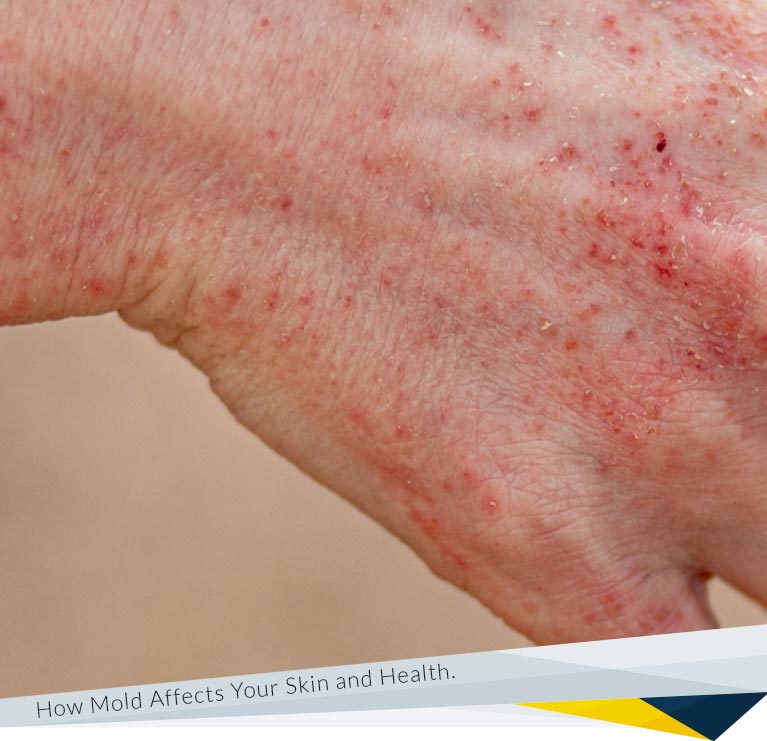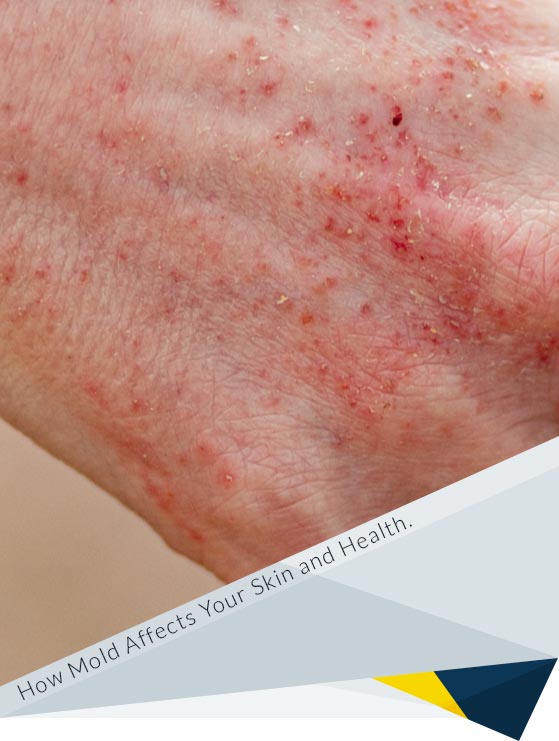
Mold Testing: molds and fungi, present both inside and outside homes, thrive in moist areas where there are organic materials for them to feed on, such as wood, paper, and textiles. Exposure to these molds can lead to various health complications, including skin problems. If you suspect a mold issue, consider mold testing as part of your home maintenance routine. Individuals with allergies or weakened immune systems are particularly susceptible to skin problems caused by mold, but it can affect anyone. This emphasizes the importance of mold inspection and detection.
Mold thrives in moist conditions. When humidity exceeds 60%, it becomes a breeding ground for mold. Regular mold detection and home mold testing can help you monitor moisture levels. Inadequate ventilation allows moisture to linger, inviting mold growth. Consider investing in a house mold inspection to identify areas lacking proper ventilation. If something remains wet for more than two days, mold is likely to develop. This underscores the need for black mold testing and timely mold testing services.

A range of mold species are known for causing skin irritations. Notably, species such as Alternaria, Aspergillus, Cladosporium, Penicillium, and the infamous black mold, Stachybotrys, are often responsible.
These molds can reside both indoors and outdoors, taking a liking to materials such as wood, paper, and fabrics. Conducting thorough mold inspection tests is key to detecting these irritants in your environment.
When your skin just doesn't feel right, with itchiness and redness popping up, it could be more than just a bad day; it might be your body waving a red flag about mold in your living space. Those annoying rashes, the kind that make you want to scratch incessantly, or that dry, cracked skin that burns—a real hassle, isn't it? They could all be subtle hints of mold's unwelcome presence.
Ever find yourself with those pesky hives? The kind that turns a patch of skin into a raised map of discomfort? They're not just there for no reason; mold might be the unwelcome guest causing them. And for those who know the never-ending battle of eczema, that dry, itchy reality can actually get worse if mold's in the mix. That's why keeping an eye on the air you breathe at home and getting it checked out is key.
Then there's dermatitis - talk about a skin drama queen. Red, itchy patches that can even blister up. Yikes. That's mold showing its true colors. So, keeping tabs on the quality of air at home isn't just about comfort—it's about health. Watch out for these tell-tale skin woes because they're part of the mold symptoms exposure lineup. And let's face it, no one wants to deal with the aftermath of mold poisoning symptoms in adults. It's better to test and be sure rather than guess and suffer.
Think mold might be the prankster behind your skin woes? It's time to play detective with your doctor. They'll take a trip down your health history lane and do a physical check-up. Don't be surprised if they suggest skin biopsies or blood tests to connect the dots for a clearer diagnosis.
Over-the-Counter Tricks for Minor Mold Mischief
For those not-so-serious skin irritations, hydrocortisone creams and calamine lotions can be your skin's best friends. They're great at calming the itch and dialing down the red alert. But remember, chatting with a healthcare pro before diving into any new treatment is a smart move.
Prescribed Arsenal for Tougher Battles
Facing a mold foe that's a bit more formidable? Your doctor might call in the big guns: antifungal creams or corticosteroid treatments. These are no DIY remedies, so make sure to use them under the watchful eye of a medical expert.
Prevention: Your Mold Defense Strategy
What is the best game plan against mold-related skin issues? Keep mold out of the game. Ensure your living areas are as dry as a good humor joke and as clean as a whistle. Regular checks for air quality and mold are like your home's health check-ups, keeping it a no-mold zone.
Living with mold is more than an inconvenience; it's a genuine health risk that can have a range of impacts on your well-being. The question isn't if mold can make you sick, but rather how it affects you. Mold exposure can lead to everything from minor annoyances to significant health problems. The inhalation of mold spores is particularly concerning, as it can cause respiratory issues and other unwelcome health effects.
To curb mold's influence on your health, aim to maintain a dry environment in your home. Utilizing dehumidifiers to manage indoor humidity is a great starting point. Additionally, addressing leaks promptly is crucial - ignoring them is essentially an invitation for mold growth. When encountering mold, especially the infamous black mold, take it seriously. Wearing protective gear, such as face masks, can prevent inhaling harmful spores. Avoiding mold-infested areas is also key to protecting your health.
If you suspect that mold is the culprit behind skin irritations or other health issues, don't hesitate to seek medical advice. While mold-induced skin problems can be troublesome, the right medical treatments can offer significant relief.
Reach out to FDP Mold Remediation for mold elimination solutions, including black mold inspection, residential mold testing, and more. Contact us at 877-421-2614.
Yes, children are particularly sensitive because their immune systems are still developing. This can lead to more noticeable symptoms. To keep your little ones safe, it's wise to regularly check your home's air quality for any mold presence.
This can vary. Some people might start experiencing symptoms within a few hours, while for others, it may take a few days. Timely mold testing is recommended if you suspect exposure.
There are home mold testing kits, but for a reliable diagnosis relating to health symptoms, a professional evaluation is recommended. Contact a mold testing service for a detailed examination.
Absolutely. Not everyone shows visible skin reactions. Some might have respiratory issues or headaches instead. Regular mold checks in your home can help identify hidden problems.
Yes, pets can be affected by mold. They might exhibit itching, breathing problems, or behavioral changes. Protect your furry friends by ensuring your home's air is tested for mold.
Symptom relief can vary after mold removal. While some improvement might be noticed, it's important to see a doctor for persistent or severe symptoms. Continued air quality monitoring ensures the environment stays mold-free.



